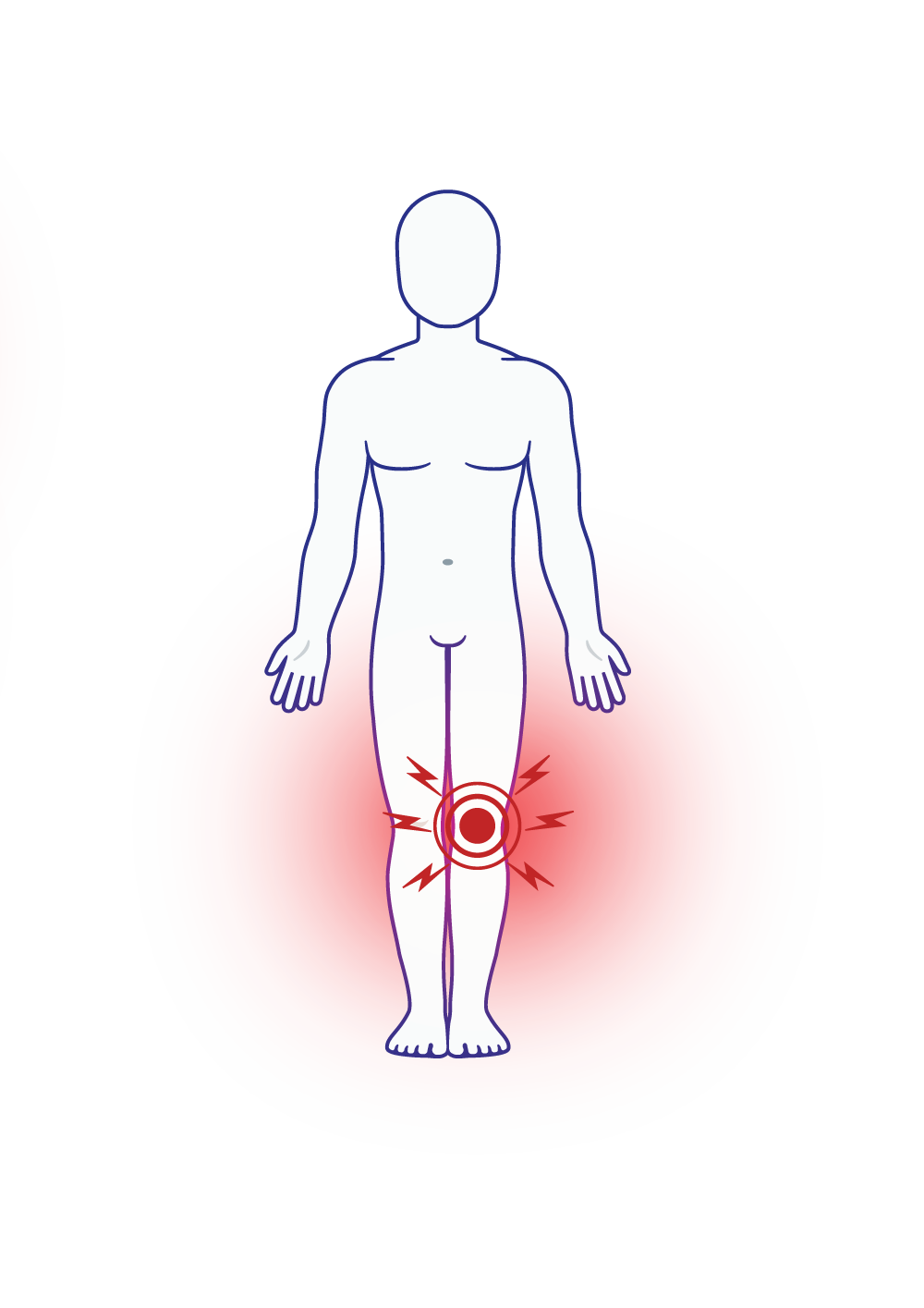
Overview
The most common causes for joint pain are an injury to the cartilage surfaces, which could be due to an acute traumatic injury, or a chronic loss of cartilage due to arthritic conditions (osteoarthritis and rheumatoid arthritis are the most common). Joint pain can also be caused by an injury to the soft tissue structures, which include meniscus injuries in knees and labral injuries in the shoulder or hip joints. Sometimes joint pain remains even after correcting the structural pathology e.g., persistent knee and hip pain after replacement surgery. The mechanism for this type of pain is most likely secondary to local and central nerve sensitivity mechanisms.
Symptoms
Common symptoms include pain in the joint with movement, swelling and locking. Sometimes pain refers away from the painful joint e.g., thigh and knee pain secondary to hip osteoarthritis.
Treatments
Maintaining joint movement and muscle function around the joint are the most important treatment modalities for joint pain. Physiotherapists and exercise physiologists play an essential role to provide treatments to help maintain good joint function.
Weight loss can be very helpful to reduce joint pain in weight bearing joints. Even losing less than 5kg can reduce the stress through joints.
Pharmacological measures to manage chronic joint pain include long-acting Paracetamol (Panadol Osteo) taken daily, anti-inflammatories, or more advanced anti-inflammatory medication taken for rheumatoid arthritis.
Acute joint pain accompanied by mechanical symptoms like locking, can benefit from surgical intervention – knee, shoulder, or hip arthroscopic surgery. Shoulder pain due to a tear of the rotator cuff in the young population will benefit from shoulder surgery. Replacement surgery is an effective measure to manage chronic joint pain secondary to arthritis.
Injection treatment options for joint pain include intra-articular corticosteroid injections for acute joint pain or Platelet Rich Plasma (PRP) injections for longstanding joint pain secondary to moderate arthritis. Sometimes intra-articular local anaesthetic joint injections can help to confirm a diagnosis e.g., to confirm that the hip joint is the culprit in longstanding groin pain.
Joint nerve block procedures can help to reduce chronic joint pain e.g., genicular nerve radiofrequency denervation of the hip and knee joint or supra scapular, axillary and pectoral nerve blocks for shoulder pain.